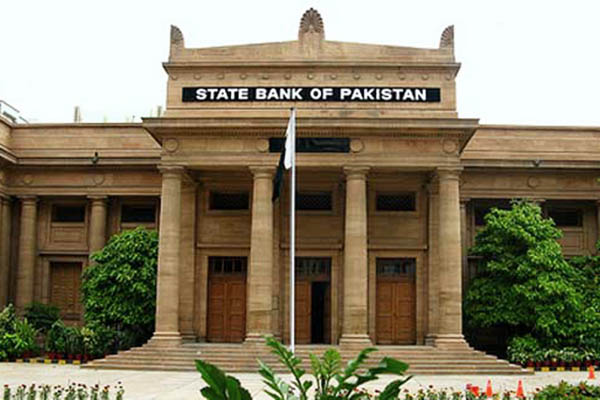
No Credit
Pakistan’s gross financing needs in the ongoing fiscal year will be “more than fully met” under the International Monetary Fund (IMF) program, the State Bank of Pakistan (SBP) and the Finance Ministry said on Sunday, adding that authorities are working to secure an “extra cushion” of $4 billion to ensure all requirements are met.
In a joint statement, the ministry and central bank noted that Pakistan’s foreign exchange reserves had fallen since February, as foreign exchange inflows have been outpaced by outflows. “The inflows mainly comprise of multilateral loans from the IMF, World Bank and ADB; bilateral assistance in the form of deposits and loans from friendly countries like China, Saudi Arabia, and the U.A.E.; and commercial borrowing from foreign banks and through the issuance of Eurobonds and Sukuks,” it said, adding that the slowdown of inflows was linked to a delay in completing the next review of the IMF program, while outflows have been boosted due to debt servicing on foreign borrowing.
“At the same time, the exchange rate has come under significant pressure, especially since mid-June,” read the statement, noting this was due to the U.S. dollar strengthening; a mounting current account deficit; declining foreign exchange reserves; and prevailing uncertainty over the IMF program and domestic politics. “However, important developments have happened recently that will address both of these temporary issues,” it said, recalling that a staff-level agreement on the IMF review had been completed on July 13 and disbursal of $1.2 billion was expected in a few weeks. “At the same time, macroeconomic policies—both fiscal policy and monetary policy—have been appropriately tightened to reduce demand-led pressures and rein in the current account deficit,” it said, noting the government’s intent to serve out the rest of its term until October 2023 and implement all IMF conditions was a positive indicator.
The joint statement said Pakistan’s financing needs in the ongoing fiscal were linked to a current account deficit of around $10 billion and principal repayments on external debt of around $24 billion. “In order to bolster Pakistan’s foreign exchange reserves position, it is important for Pakistan to be slightly over-financed relative to these needs,” it said, adding an “extra cushion” of $4 billion was planned over the next 12 months.
Stressing that “important” measures have been taken to contain the current account deficit, it said that it had ballooned due to high global commodity prices, rapid domestic demand that led to overheating of the economy, artificially low domestic energy prices due to the February subsidy package, an “unbudgeted and pro-cyclical fiscal expansion,” and heavy energy imports in June. The statement noted that the recent hike in the interest rate was intended to contain the deficit, adding the energy subsidy package had been withdrawn, and the next fiscal’s budget targeted a consolidation of nearly 2.5 percent of GDP, centered on tax increases while protecting the most vulnerable. “This will help cool domestic demand, including for fuel and electricity,” it said, adding curbing imports had also helped reduce the current account deficit.
Noting that payments in July were a “sustainable” $6.1 billion compared to $7.9 billion in June, the statement said that the surge in energy imports in June had allowed for a stock of diesel and furnace oil sufficient for 5 and 8 weeks, respectively, in the country, far higher than the normal 2 to 4 weeks. “This implies a lower need for petroleum imports going forward,” it added.
“With the recent rains and storage of water in the dams, hydroelectricity is also likely to increase and need to generate electricity on imported fuel is expected to decline going forward,” it said, adding this should lead to a smaller import bill that should become obvious within 1-2 months. “Overall, imports are expected to decline in coming months due to a decline in global commodity prices, the higher oil stock, the unfolding impact of higher domestic prices of petroleum products, adjustments in electricity and gas tariffs, the removal of tax exemptions under the FY23 budget, administrative measures taken to curtail imports, and the lagged impact of the monetary and fiscal tightening that has been undertaken,” it said.
On the recent devaluation of the rupee, it said “around half” of the depreciation since December 2021 could be attributed to the global surge in the U.S. dollar. “Of the remaining half, some is driven by domestic fundamentals. In particular, the widening of the current account deficit, especially in the last few months,” it said, noting that once the current account deficit reduced, the rupee would gradually strengthen. “The remaining depreciation has been overdone and driven by sentiment. The rupee has overshot due to concerns about domestic politics and the IMF program. This uncertainty is being resolved, such that the sentiment-driven part of the rupee depreciation will also unwind over the coming period,” it predicted.
“Where the market has become disorderly, the State Bank has continued to step in through sales of U.S. dollars to calm the markets and will continue to do so, as needed in the future,” read the statement, adding that steps were also being taken to counter speculation. “Rumors that a particular level of the exchange rate has been agreed with the IMF are completely unfounded,” it emphasized. “The exchange rate is flexible and market-determined, and will remain so, but any disorderly movements are being countered,” it said. “Clearly, the rupee can overshoot temporarily as it has done recently. However, it moves both ways over time. We expect this pattern to re-assert itself in the coming period. As a result, the rupee should strengthen in line with improved fundamentals in the form of a smaller current account deficit as well as stronger sentiment,” it added.
